- Introduction
- Decentralized Governance Challenges
- Incomplete decentralization and scalability
- Environmental impact challenges
- Psychological and cultural challenges
- Incomplete decentralization
- Technical complexity
- Legal and technical challenges
- Political influence challenges
- Security risks
- Limited user participation and interoperability issues
- Acceptance and trust-building challenges
- Psychological challenges in user participation
- Interoperability challenges
- Practical Examples
- Decentraland: Decentralized decision-making
- The Sandbox: Combining creativity and governance
- Axie Infinity: Blockchain games
- Bit.Country
- DAOstack
- Aavegotchi
- Polkadot project and interoperability among metaverses
- Blockchain-Based Governance in the Metaverse: ALFANOVA Project
- ALFANOVA DAO: Decentralized governance on a metaverse scale
- Digital asset management in ALFANOVA
- Creation of autonomous metaverse communities
- Decentralized finance (DeFi) markets in ALFANOVA
- Platform interoperability
- Focus on digital arts and crafts
- Metaverse events and social engagement
- Conclusion and Future Outlook
- Upcoming opportunities and threats
- The need for public education and acceptance
- Suggestions for developing governance models
Introduction
In the first part of this article, blockchain-based governance models and their impact on the management of decentralized metaverse platforms were examined. In this section, the advantages of these models will be elaborated, focusing on aspects such as transparency, security, and user participation, comparing decentralized models with centralized ones. The advantages of these governance types in improving the economic and social performance of metaverse platforms and enhancing the quality of interactions between users and developers will also be discussed.
One key aspect of blockchain-based governance models is the emphasis on decentralization and increasing democracy, which enables the distribution of decision-making power among all users. This feature helps reduce corruption, increase transparency, and build trust within platforms, while creating a secure environment resistant to information manipulation. Additionally, other benefits, such as cost reduction, financial efficiency, and the creation of self-sustaining and stable communities in the metaverse, will be analyzed.
Given the rapid growth of the metaverse and the need to establish efficient and transparent governance structures, blockchain-based governance models can offer innovative solutions to address the challenges in managing decentralized metaverse platforms. This section will explore these benefits and challenges, along with an analysis of the future of these models and their evolution in the metaverse space.
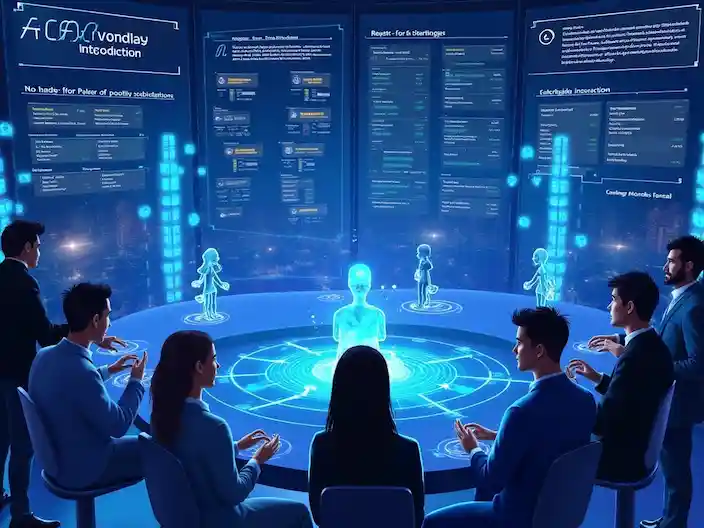
Challenges Facing Decentralized Governance in the Metaverse
Despite the significant advantages, decentralized governance in the metaverse faces numerous challenges. These challenges can undermine the effectiveness of blockchain-based governance models and require creative and precise solutions to overcome them. Below are these challenges discussed in more detail:
- Scalability Issues
As the number of users and the complexity of decisions increase, scalability becomes one of the most significant challenges for decentralized governance:
• Increasing data volume: Recording all transactions and processes on the blockchain leads to a growing data volume and reduced network speed.
• Widespread voting: Managing voting for millions of users requires substantial resources and time, potentially reducing efficiency.
• Transaction processing challenges: Blockchain network congestion, such as on Ethereum, can lead to higher gas fees and delays in decision implementation.
- Environmental Impact Challenges
Many blockchain platforms, particularly those using the Proof of Work consensus algorithm, consume significant amounts of energy, which can become a major challenge for the adoption of decentralized governance:
• High energy consumption: Mining blocks and ensuring blockchain security require a considerable amount of electricity, leading to potential environmental consequences.
• Environmentally friendly solutions: To address this issue, many projects have turned to alternative consensus algorithms, such as Proof of Stake or Proof of Authority, which consume less energy.
- Psychological and Cultural Challenges
Psychological and cultural barriers are one of the main obstacles to adopting decentralized governance in the metaverse, influencing user behavior:
• Fear of new technologies: Many users experience anxiety and fear regarding the use of blockchain systems and decentralized governance, which can lead to reduced participation.
• Cultural differences in adoption: The acceptance of new governance models may vary across different regions, and these differences could hinder the global expansion of decentralized metaverse platforms.
- Incomplete Decentralization
Some platforms that appear decentralized in practice may operate in a semi-centralized manner:
• Whale influence: Users holding a large number of governance tokens may gain disproportionate power in decision-making processes, potentially altering the system for their benefit.
• Developer influence: In many cases, the primary developers of the platform still hold significant influence over decisions, which contradicts decentralization principles.
• Power distribution inequality: Concentration of tokens in the hands of a few can undermine fairness and transparency.

- Technical Complexity
Blockchain technology and its governance tools can still be complex and difficult for many users:
• Usability challenges: Average users may be unfamiliar with concepts such as smart contracts, DAOs, or governance tokens.
• Training requirements: To increase user participation, widespread education and clarification of concepts are essential.
• Risk of technical errors: Mistakes in implementing smart contracts or voting systems can result in asset losses or legal issues.
- Legal and Regulatory Challenges
Laws and regulations regarding blockchain and the metaverse remain unclear in many countries, leading to potential complications:
• Lack of clear legal frameworks: Many countries have not yet established comprehensive regulations for decentralized governance in the metaverse.
• Legal restrictions: Some countries have strict regulations on the use of blockchain and cryptocurrencies, which could impede the implementation of decentralized governance.
• Dispute resolution: The lack of clear legal frameworks for resolving disputes in decentralized systems can lead to user distrust.
- Political Influence Challenges
Decentralized governance faces new political threats, which may arise from governments or state-backed entities:
• Sanctions and government regulations: Governments may impose strict regulations or sanctions on blockchain networks and cryptocurrencies, hindering the acceptance of decentralized governance.
• Political control: In some cases, countries or specific entities may attempt to influence blockchain networks for their own political agendas.
- Security Risks
Despite the inherent security of blockchain, decentralized governance systems still face security threats:
• Cyberattacks: Attacks on smart contracts or theft of governance tokens can disrupt governance systems.
• Software vulnerabilities: Coding errors in smart contracts or DAO systems can lead to exploitation by attackers.
• Voting attacks: Attackers can buy large amounts of governance tokens to take control of the decision-making process.
- Limited User Participation
Active user participation is essential for the success of decentralized governance models. However, in practice:
• User apathy: Many users show little interest in participating in governance processes.
• Access issues: Users without access to blockchain tools or technical knowledge are excluded from participation.
• Focus on short-term gains: Some users prioritize short-term financial benefits over long-term participation in governance processes.
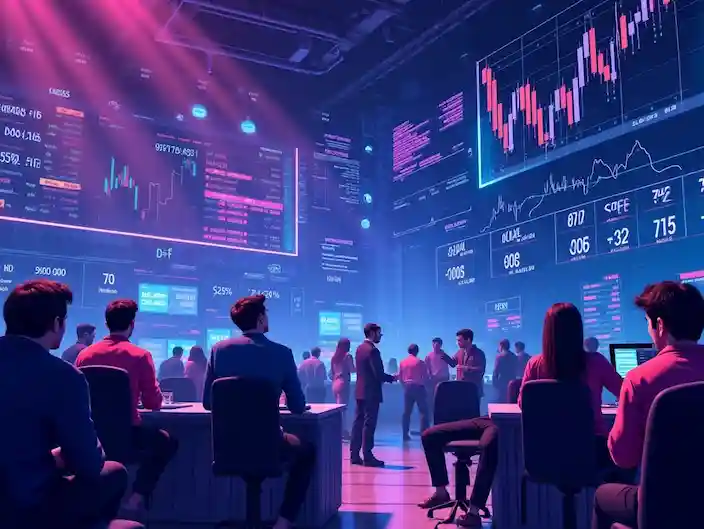
- Adoption and Trust Challenges
New governance models need to build trust to gain public acceptance:
• Lack of initial trust: Many users and investors remain skeptical about the reliability of decentralized models.
• Need for proof of success: These models must present successful examples of their operations to gain public trust.
• Competition with centralized models: Traditional structures are still considered simpler and more reliable by some users and businesses.
• Practical Examples of Blockchain-Based Governance in the Metaverse
- Kusama Network
One successful example of utilizing blockchain and decentralized governance is the Kusama Network, which is known as the test network for Polkadot. This network allows projects to experiment with new technologies using blockchain systems, and since access to this network is decentralized, user participation in governance processes is enhanced.
- Aragon
Aragon is a platform that enables users to create and manage their own decentralized organizations. This platform is particularly useful in implementing DAOs and customizable governance systems for various organizations and communities. In this platform, in addition to decentralized decision-making, financial and legal processes are transparently managed.
- Psychological Challenges in User Participation
In decentralized governance, active and continuous user participation is vital for the success of the governance system. However, some psychological challenges can affect users’ willingness to participate:
• Indifference to Participation: Many users may be reluctant to participate due to a lack of awareness of how collective decisions impact the platform.
• Erosion of Motivation: Over time, users may become fatigued with the governance process, and their motivation to participate in decision-making may decrease.
- Interoperability Challenges
One of the main goals of a decentralized metaverse is interoperability between platforms. However:
• Lack of Common Standards: The absence of global standards for interaction between platforms can prevent the transfer of data and assets.
• Conflicting Interests: Some platforms may avoid interacting with others due to competition.
a. Scalability: Many blockchain networks face issues in handling large numbers of transactions and users.
b. Interoperability: There is a need to develop standards for cooperation between different platforms.
c. Legal and Regulatory Frameworks: The absence of clear regulations can hinder the widespread adoption of these models.
d. User Education: Many users lack the necessary knowledge to participate in decentralized governance.
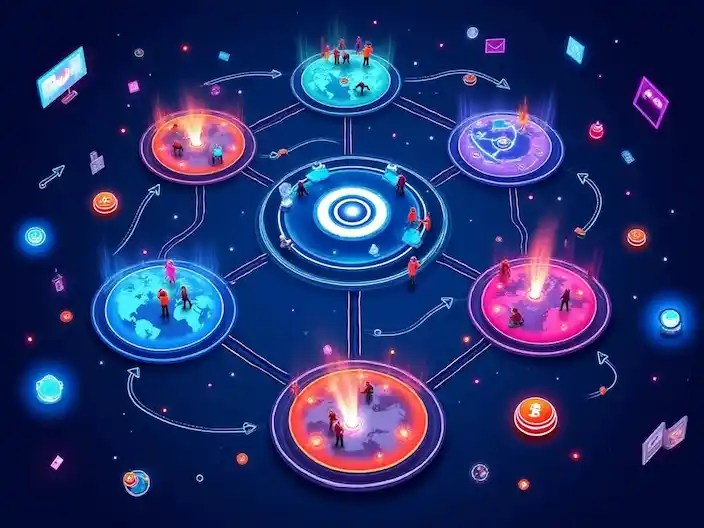
Practical Examples of Blockchain-Based Governance in the Metaverse
To better understand decentralized blockchain-based governance in the metaverse, examining real-life examples of platforms that have implemented this approach is crucial. These examples demonstrate how decentralization, transparency, and user participation are applied in platform management. Below are some of the most successful examples:
- Decentraland: Leading Virtual Ownership and Collective Decision-Making
Decentraland is one of the most well-known decentralized metaverse platforms that uses the Ethereum blockchain for managing digital assets and governance.
• DAO and decentralized decision-making: Decentraland has a decentralized autonomous organization (DAO) for platform management. Users can participate in important decisions using the MANA governance token, such as:
o Changes to platform policies. o Budget allocation for development projects. o Virtual market management.
• Virtual land ownership: Users can purchase LAND (non-fungible tokens), gain ownership of digital land, and develop it according to their preferences.
- The Sandbox: Economic Governance and User Creativity
The Sandbox, another metaverse platform, implements decentralized governance using the Ethereum blockchain.
• Economy based on the SAND token: The SAND token is the platform’s primary currency, enabling user participation in governance and the digital economy. Users can:
o Participate in votes on platform improvements. o Earn revenue by creating digital assets or NFT-based games.
• Funding creative projects: The Sandbox allocates funds for creative projects through a DAO system, with users proposing and voting on these initiatives.
- Axie Infinity: Player-Driven Governance in Blockchain Games
Axie Infinity, a blockchain-based game, is a successful example of combining decentralized governance with gaming mechanics.
• AXS token for governance: Users can participate in decision-making processes using the AXS token, including:
o Changes to the game’s economic policies.
o Adding new features.
• Sustainable game economy: Players contribute to the platform’s economic growth by collecting and trading Axies (NFTs) while benefiting financially.
- Bit.Country: The Combination of Metaverse and Decentralized Communities
Bit.Country is a metaverse platform that enables users to create custom metaverses.
• Autonomous Communities:
Each metaverse on Bit.Country operates as a DAO, allowing users to set their own rules and policies.
• Use of Native Tokens:
Each metaverse can have its own specific tokens, used for governance and economic transactions.
• Collaborative Tools:
Users can leverage blockchain tools to manage assets, vote, and execute smart contracts.

- DAOstack: A Platform for Managing Metaverse Communities
DAOstack serves as a practical tool for creating and managing DAOs, playing a vital role in metaverse governance.
• Support for Collective Decision-Making:
This platform offers tools to create voting structures and decentralized management.
• Facilitating Interoperability Between Platforms:
DAOstack enhances interoperability among different metaverses, enabling resource and information sharing.
- Aavegotchi: Combining NFTs and Governance in the Metaverse
Aavegotchi, an NFT-based metaverse platform, uses decentralized governance to manage its user community.
• GHST Token:
Users can participate in governance processes using the GHST token, influencing platform decisions.
• Creative Communities:
Aavegotchi encourages users to create new assets and participate in events, fostering a dynamic and active community.
- Polkadot Project and Interoperability Among Metaverses
Polkadot strengthens decentralized governance by providing blockchain infrastructure for interaction among different metaverses.
• Support for Interoperability:
Platforms can share their assets and data through the Polkadot network.
• Chain Management:
Polkadot enables decentralized chain management and voting among platforms.
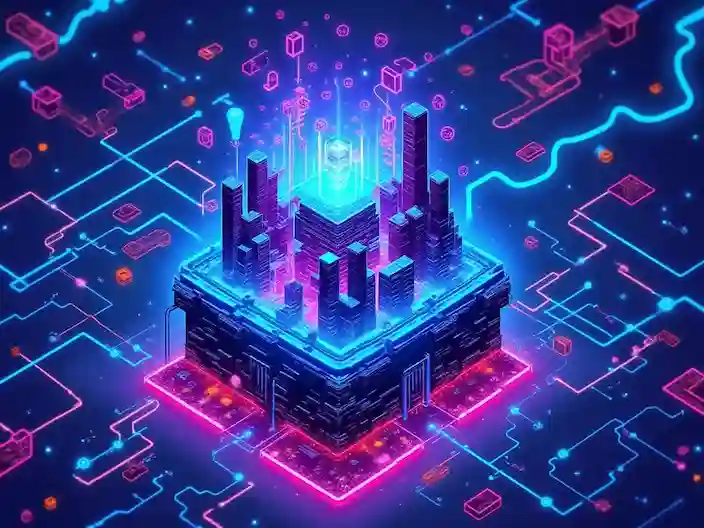
Blockchain-Based Governance Models in the Metaverse: ALFANOVA Project
The ALFANOVA project, as one of the pioneers in the metaverse and blockchain technologies, serves as a prime example of integrating decentralized governance with technological innovations. Launched by Hadi Chalousi, its founder and creator, ALFANOVA employs blockchain-based governance models for efficient and transparent management of its platform. Below are details on how governance functions within ALFANOVA:
- ALFANOVA DAO: Decentralized Governance at the Metaverse Scale
ALFANOVA uses a Decentralized Autonomous Organization (DAO) to manage its platform. This DAO allows users to participate in decision-making processes:
• Token-Based Voting:
Users can participate in topics such as:
- Platform development policies.
- Financial management and budgeting.
- Decision-making regarding new metaverse projects.
• Full Transparency:
All voting and decisions are recorded on the blockchain and are visible to all users.
- Managing Digital Assets in ALFANOVA
A key feature of ALFANOVA is the ability to own, manage, and trade digital assets in the metaverse:
• NFT Tokens for Assets:
ALFANOVA uses Non-Fungible Tokens (NFTs) to define and transfer ownership of metaverse assets. Users can:
- Register their digital land, artworks, and virtual items as NFTs.
- Sell or lease these assets in metaverse markets.
• Shared Ownership:
Users can purchase assets through fractional ownership and generate income from them.

- Creating Autonomous Metaverse Communities (Sub-DAOs)
ALFANOVA enables users to create and manage their own local or thematic communities:
• Sub-DAOs:
These smaller communities function as independent DAOs and can set their own rules.
• Participatory Governance:
Members of each Sub-DAO can participate in decisions related to their community, such as:
- Designing metaverse events and festivals.
- Managing resources and collective investments.
- Decentralized Finance (DeFi) Markets in ALFANOVA
ALFANOVA uses decentralized finance protocols to manage transactions and investments:
• Lending and Borrowing:
Users can place their digital assets as collateral in the system and receive loans.
• Staking and Rewards:
Governance tokens can be staked, allowing users to earn rewards through participation in governance and transaction validation.
• Liquidity Provision:
ALFANOVA offers markets for liquidity provision, helping to increase interoperability among users.
- Interoperability Between Platforms
A key goal of ALFANOVA is to facilitate interaction among different metaverses:
• Asset Standardization:
ALFANOVA uses blockchain standards to enable asset transfer across other metaverses.
• Collaboration with Metaverse Platforms:
ALFANOVA collaborates with projects like Decentraland and The Sandbox to create a larger ecosystem.
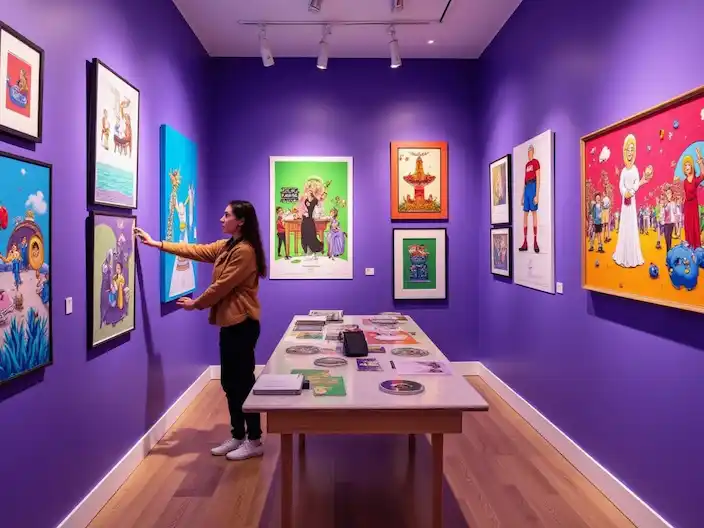
- Focus on Digital Art and Handicrafts
With a particular focus on digital art and handicrafts, ALFANOVA introduces new models for managing and selling art in the metaverse:
• Metaverse Galleries and Museums:
ALFANOVA allows users to create digital galleries and museums to display artworks.
• NFT Auctions:
This platform offers auction markets for selling NFT handicrafts and artworks.
- Metaverse Events and Social Participation
ALFANOVA increases user engagement by organizing diverse events in the metaverse:
• Metaverse Fridays:
A regular event series held bi-weekly that explores various topics related to the metaverse. Users can participate in discussions and group decision-making.
• Education and Empowerment:
ALFANOVA organizes educational sessions to familiarize users with decentralized governance and related technologies.
Conclusion and Advanced Suggestions
Blockchain-based governance models have the potential to transform metaverse management structures and create free, transparent, and participatory environments. Despite advantages such as transparency, security, and reduced costs, challenges like scalability, technical complexity, and legal limitations remain the main barriers to widespread adoption of these models.
Advanced Suggestions:
- Enhancing Interoperability: Create common standards to facilitate communication between different metaverse platforms.
- Adopting Transparent Legal Frameworks: Collaborate with governments and international organizations to create regulations that protect users while fostering innovation.
- Education and Awareness: Organize training sessions for general users and developers to reduce technical complexity and increase participation.
- Design Incentive Mechanisms: Offer rewards and special privileges for active users and supporters of decentralized governance models.
- Develop Scalable Technologies: Invest in blockchain technology research and development to manage a larger number of users and transactions.
By addressing current challenges, these models can potentially become the global standard for decentralized metaverse governance in the future.
Table of Contents
Toggle

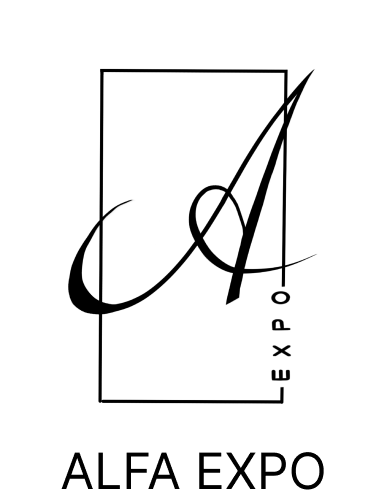
One Response